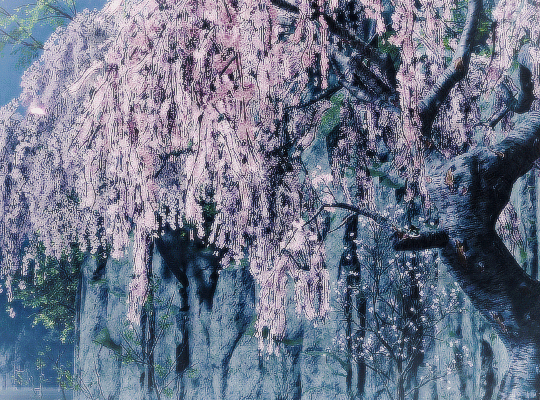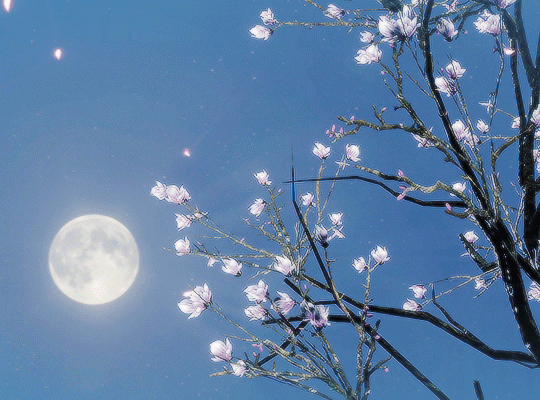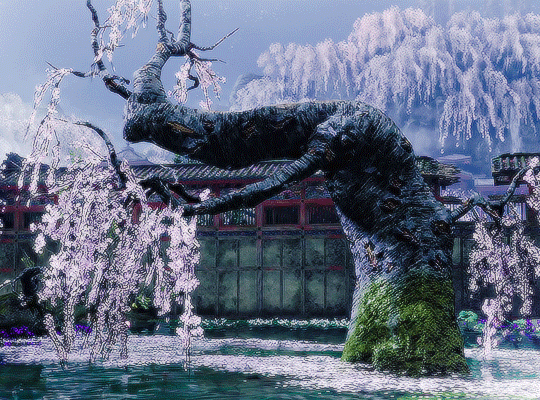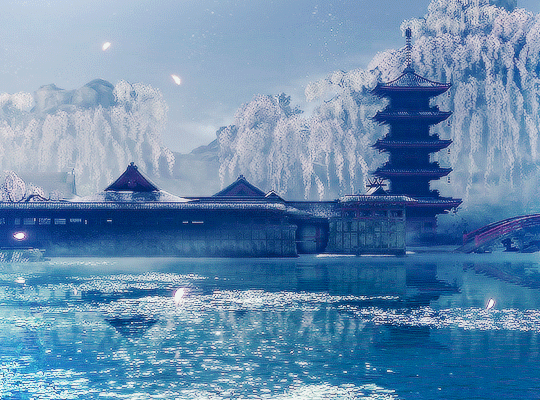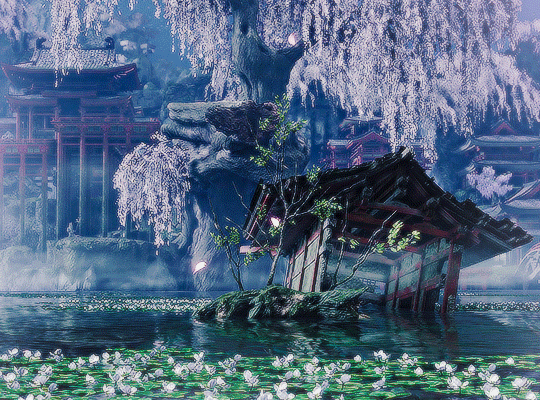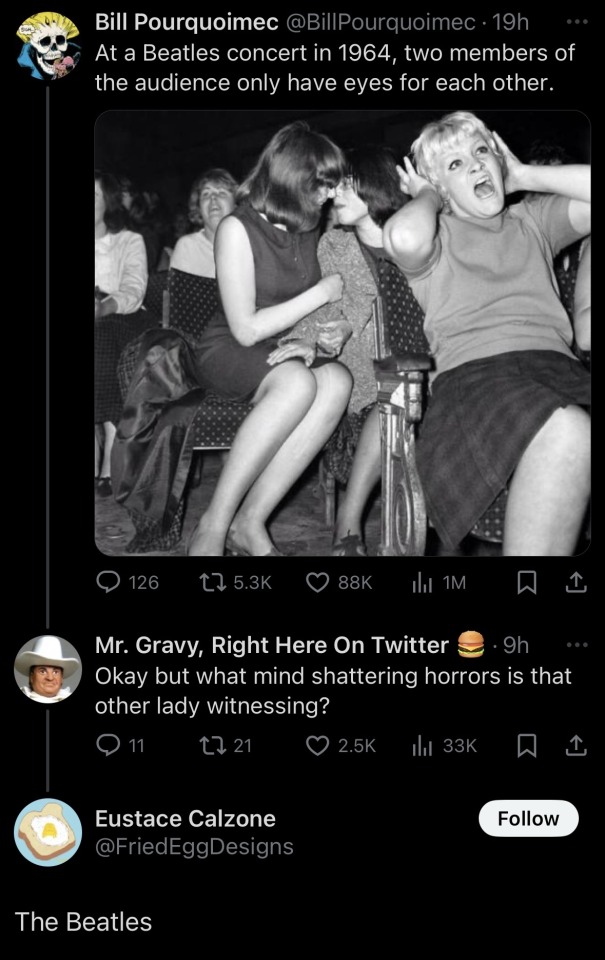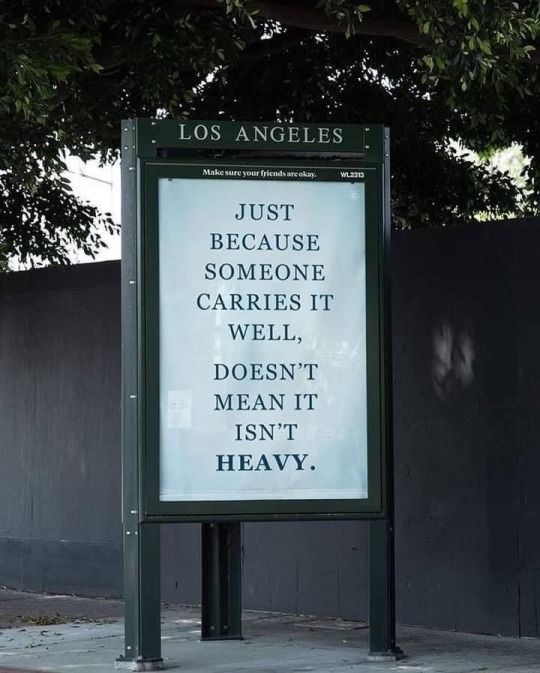Multi-Fandom BlogDreamer | Gamer | Writer
Last active 60 minutes ago
Don't wanna be here? Send us removal request.
Text
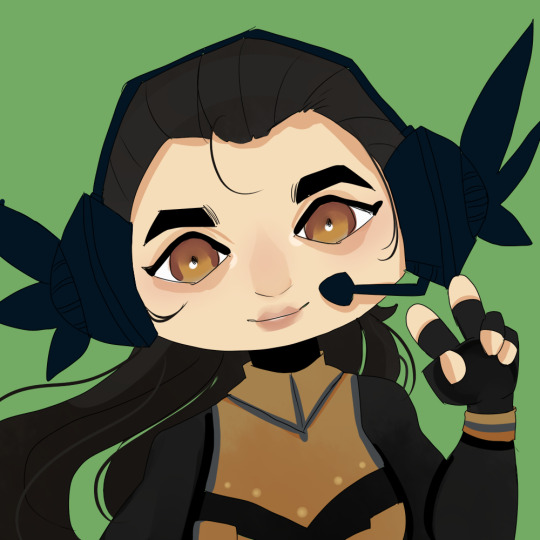
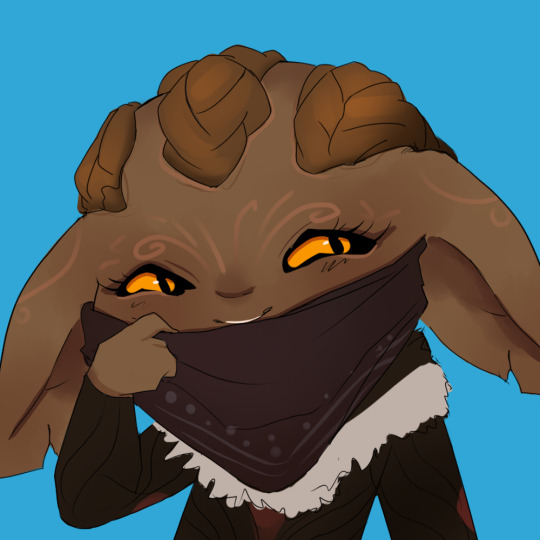
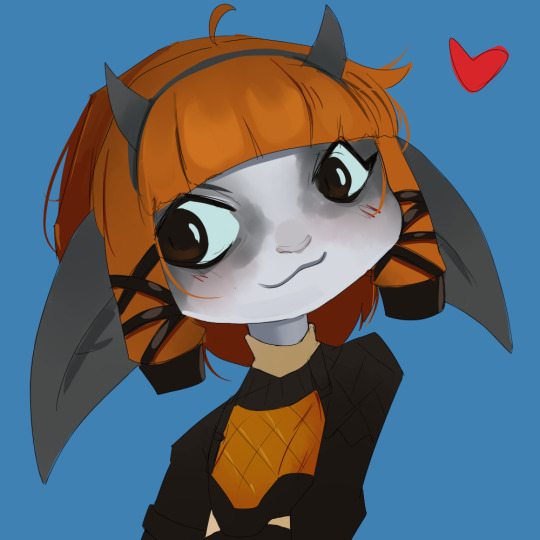

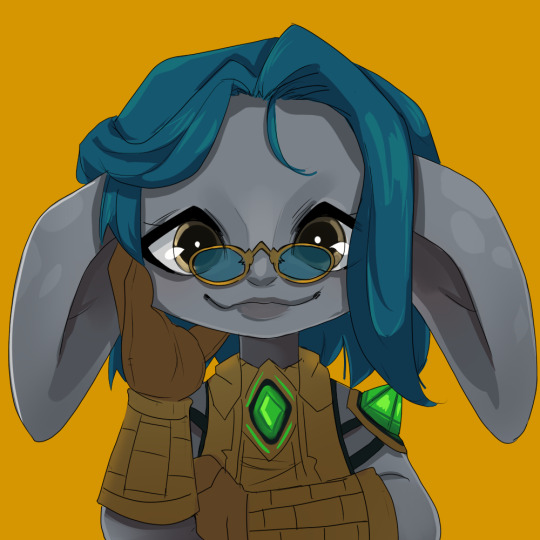
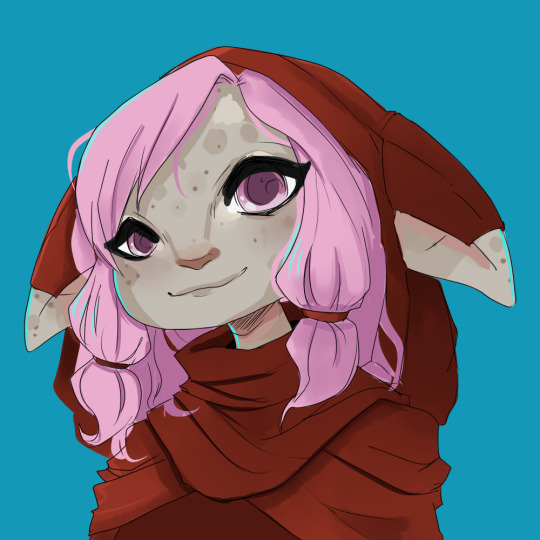
A bunch of Ko-Fi icons I did over the months! It's always such a honor to draw someone's character. Thanks for the support and thank you guys for watching!
40 notes
·
View notes
Text
1K notes
·
View notes
Text
10K notes
·
View notes
Text
Flourished Peony (国色芳华 | 锦绣芳华) : Miscellaneous
Tang Dynasty Food Chapter
Hu bing and Zhi pin
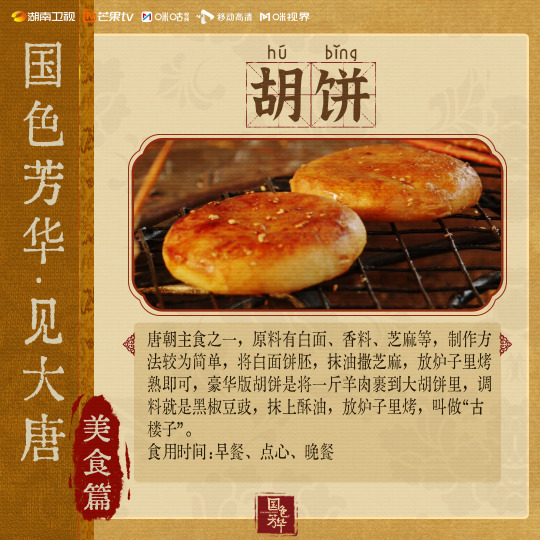
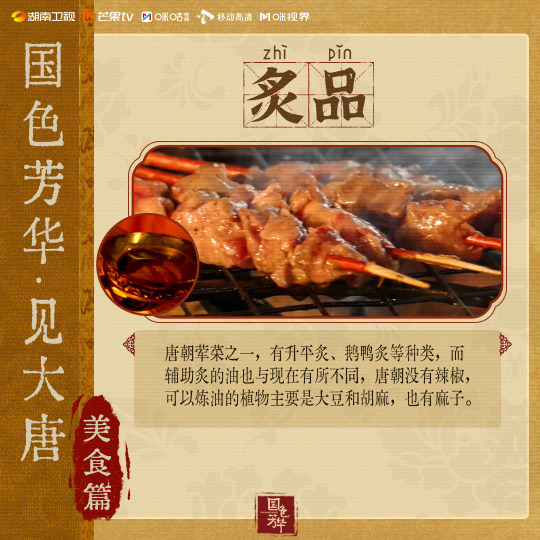
Crispy and sweet hu pancakes were one of the staple foods in the Tang Dynasty, the raw materials include white flour, spices, sesame seeds, etc. The production method is relatively simple. Spread oil and sesame seeds on the white flour cake, put it in the oven and bake it. The deluxe version of Hu Bing is to wrap a pound of mutton in a large Hu Bing, and the seasoning is black pepper and black beans, spread with ghee, and bake it in the oven. It is called "Gulouzi".
Serving time: breakfast, snack, dinner
See a figurine of a Hu ethnic man enjoying one of these while riding a camel.
Tender and tempting, roasted meat was among meat preparation methods of Tang Dynasty. There are several types, Shengping roast, goose and duck roast, etc. The oil used for roasting is also different from that of today. The plants that were used to refine oil were mainly soybeans and sesame. There was no pepper in the Tang Dynasty.
You can check my Royal Feast masterlist for more roast meat dishes in Ming Dynasty.
Props
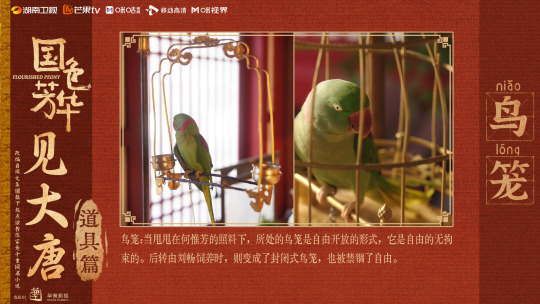
Birdcage: To represent the state of mind
When the parrot was under He Weifang's care, it was raised freely. Later when it was raised by Liu Chang, it was put in a closed birdcage with restricted freedom.
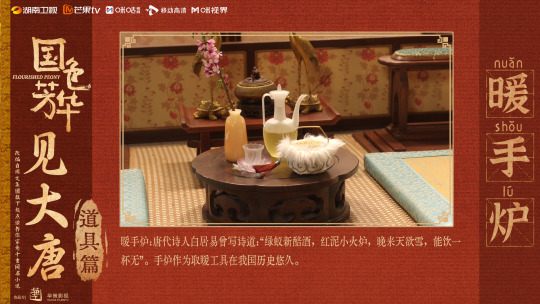
Handwarmer
Bai Juyi, a poet of Tang dynasty once wrote: "Green Ants in the Newly brewed rice wine, a small handheld red clay stove. The sky is about to snow in the evening, can I have a cup too?" [Green ant wine = newly fermented, unfiltered wine where wine residue floats on top of the wine, looking like ants.]
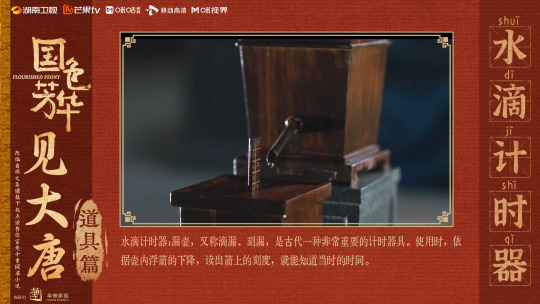
Water Clock
Water drop timer: also known as the dripping clepsydra or the engraved clepsydra, is a very important timekeeping device in ancient times. When using it, one can read the scale on the arrow according to the descent of the floating arrow in the pot to know the current time.
Clothing

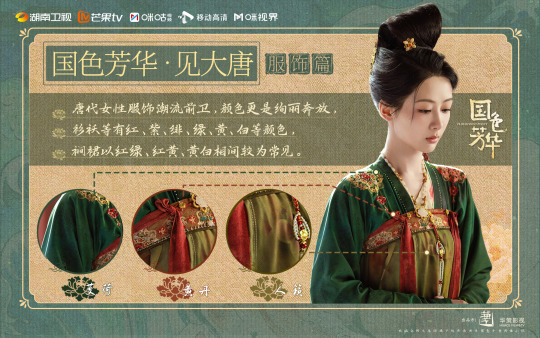
Hair ornament- A flower-shaped dian worn by women. The "dian" is different from the "hua dian" for facial makeup), made of gold, jade, jewelry, etc. There are gold dian, dian inlaid with gems, feathers, etc.
Women's clothing in Tang dynasty was fashionable and avant-garde, the colors were gorgeous and bold such as red, purple, scarlet, green, yellow, white, sky blue for jackets and red+green, red+yellow, yellow+white for the pleated skirts.

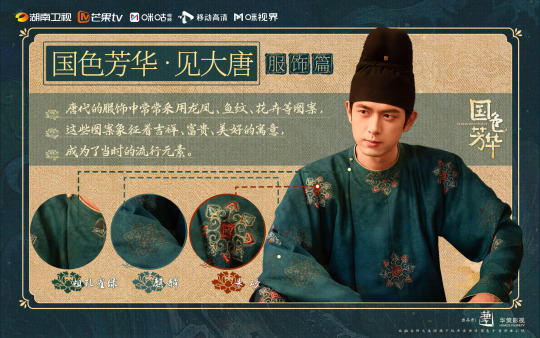
During the Sui, Tang and Five Dynasties, hairpins with flowers were very popular among the people in the Central Plains. In the Tang Dynasty, there was a phenomenon of men wearing flowers in their hair. The emperor used "bestowing flowers" to reward officials and scholars who had passed the imperial examinations.
The clothing of the Tang Dynasty often used patterns such as dragons and phoenixes, fish patterns, and flowers. These patterns symbolize auspiciousness, wealth, and good meanings. It became a popular element at the time.
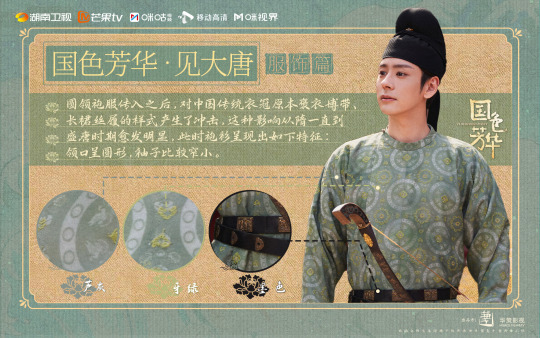
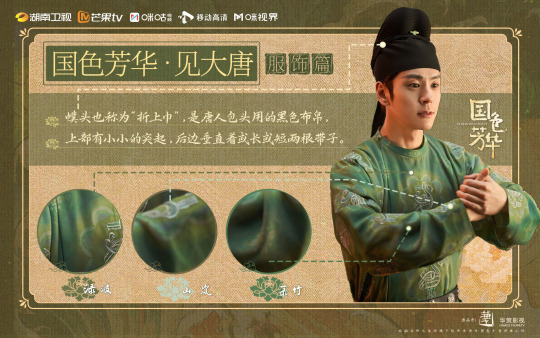
After the round-neck robe was introduced, it had an impact on the original style of traditional Chinese clothing, which was a long robe with a wide belt, a long skirt and silk shoes. This influence became increasingly obvious from the Sui Dynasty to the heyday of the Tang Dynasty. At this time, the robe showed the following characteristics: the neckline was round, and the sleeves were relatively narrow.
The futou, also known as the "zhe shang jin", is a black cloth used by the Tang people to wrap their heads. It has a small protrusion on the top and two long or short straps hanging vertically at the back.
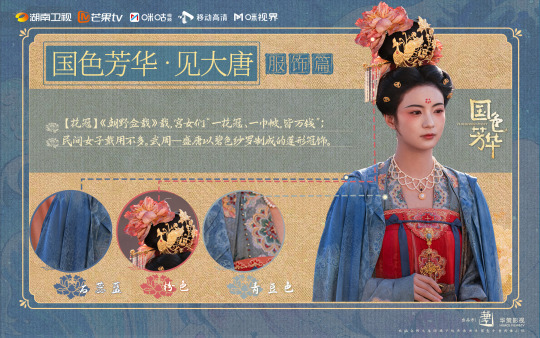
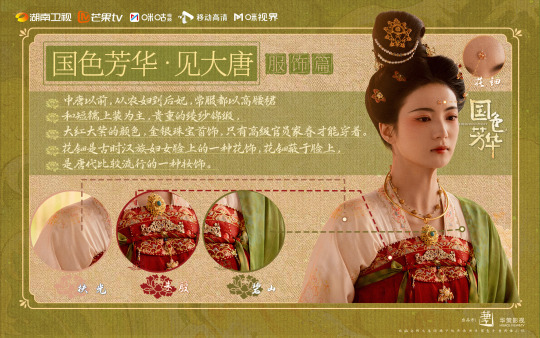
According to the "Chaoye Qianzai", the palace ladies "a flower crown and a scarf, both cost ten thousand coins"; ordinary women rarely wore them. Wu Zhou - A crown made of green gauze in the heyday of the Tang Dynasty.
Before the mid-Tang Dynasty, from peasant women to concubines, their daily clothes were all high-waisted skirts. The top is mainly made of precious silk and brocade. Only high-ranking officials could wear bright red and purple colors and gold and silver jewelry. Huadian is a kind of flower decoration on the face of ancient Han women. The flowers are covered on the face. It was a popular type of makeup in the Tang Dynasty.
Peacock Headdress Dancer
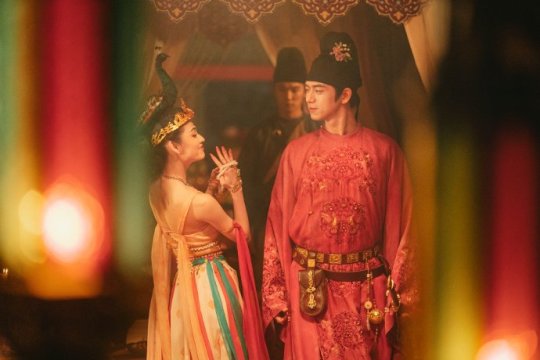
.
And last but not least, these complimentary posters
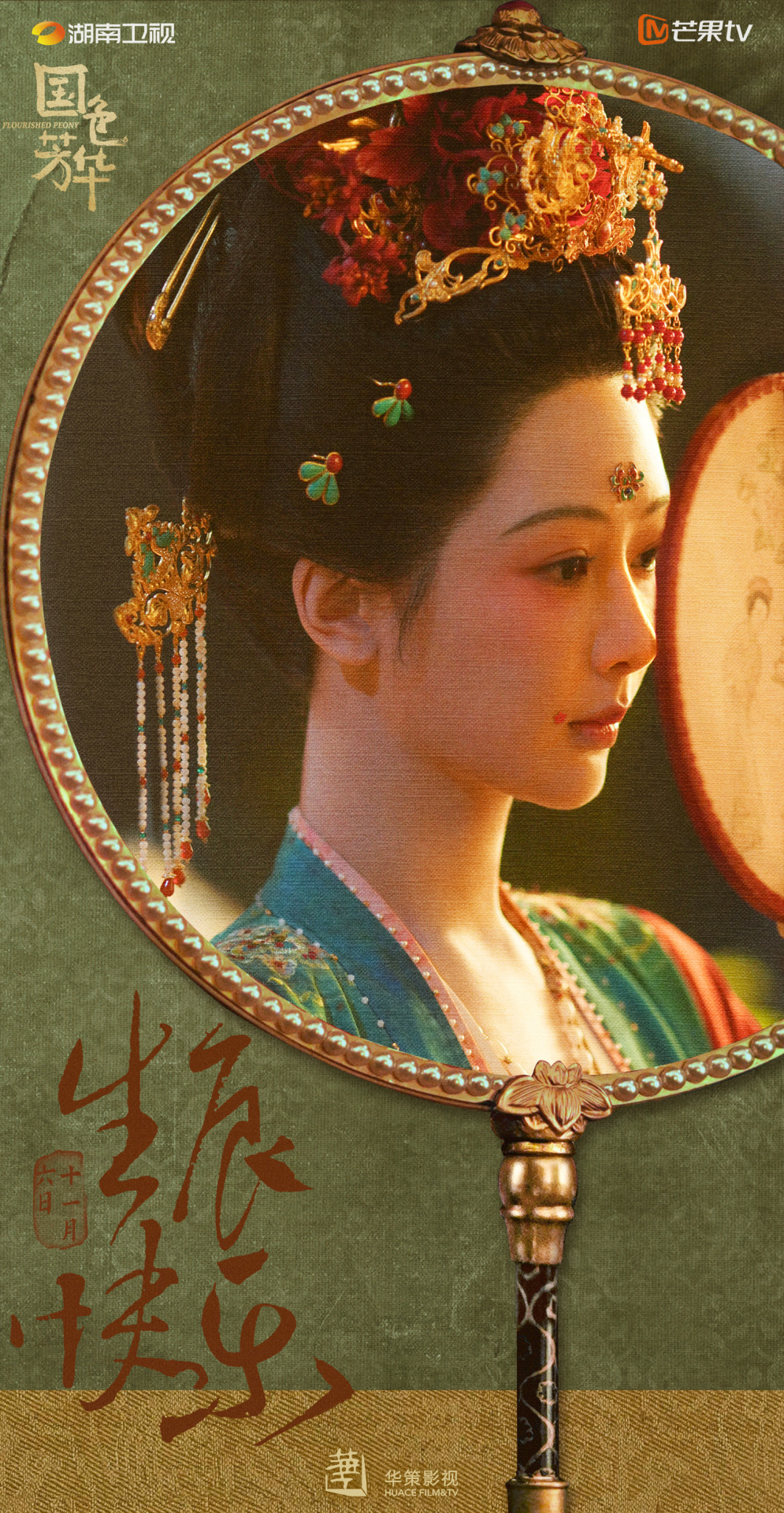
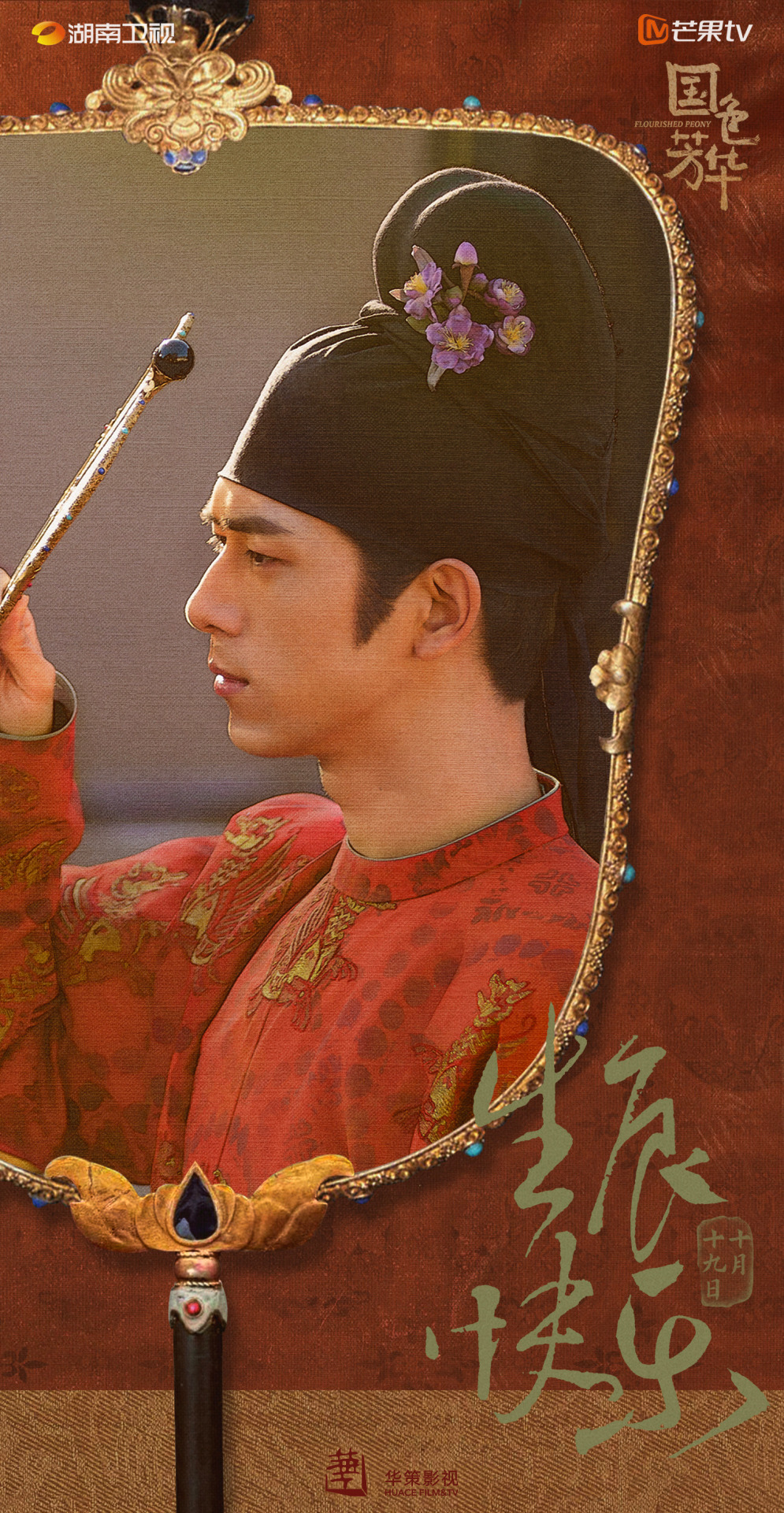
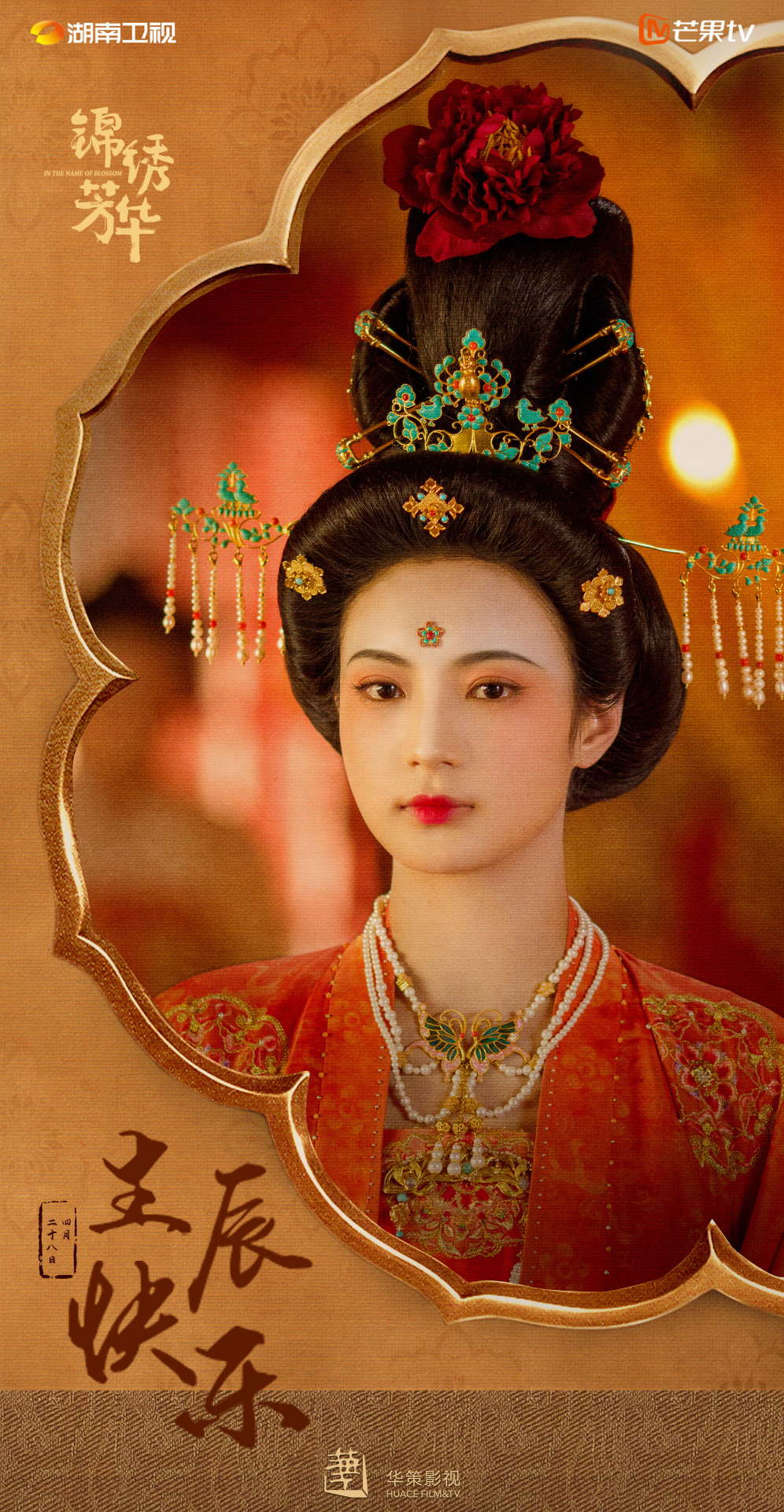
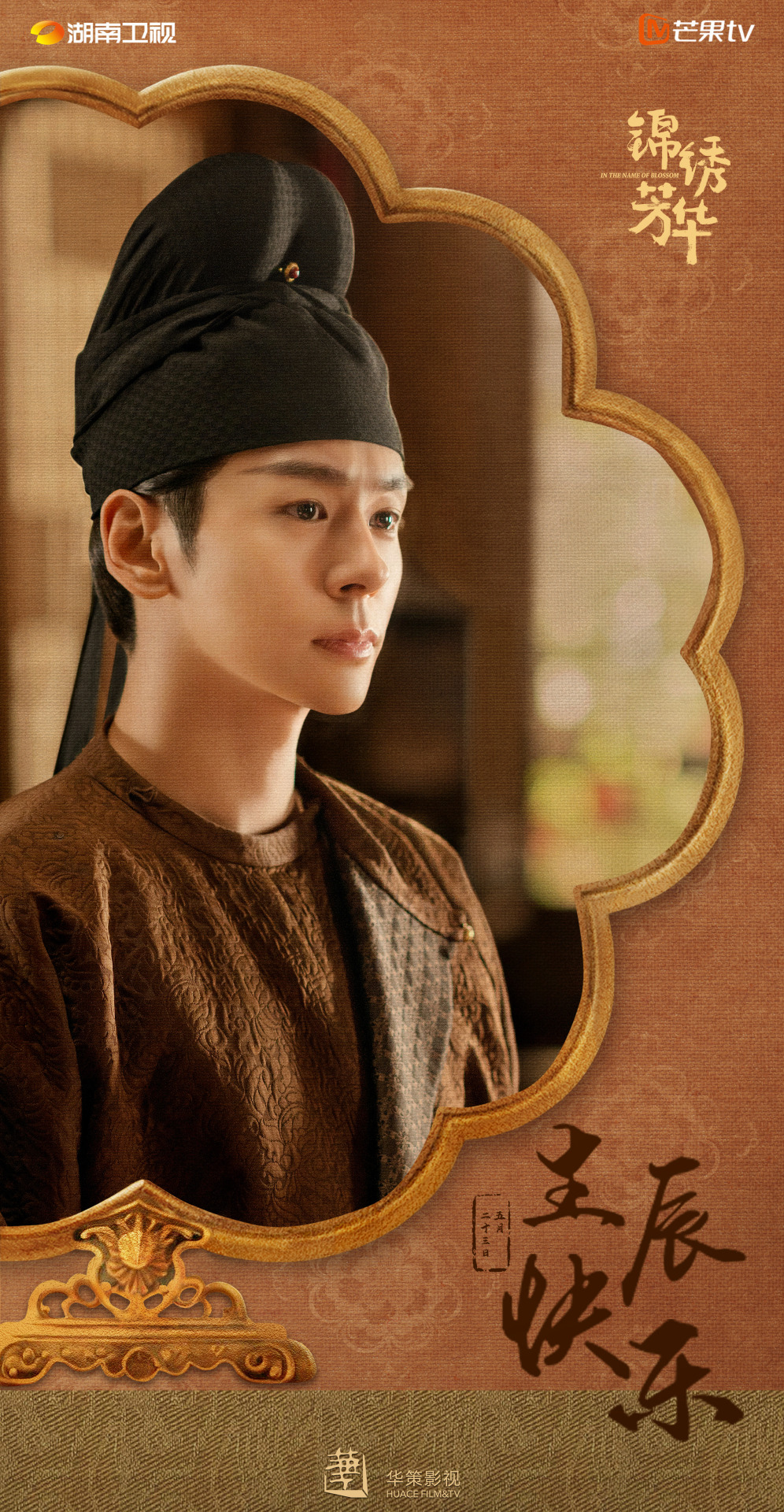
.
Flourished Peony (国色芳华 / Guo Se Fang Hua | 锦绣芳华 / Jin Xiu Fang Hua) Cultural Meta Masterpost!
74 notes
·
View notes
Text
Flourished Peony (国色芳华 / Guo Se Fang Hua | 锦绣芳华 / Jin Xiu Fang Hua) Cultural Meta Masterpost!
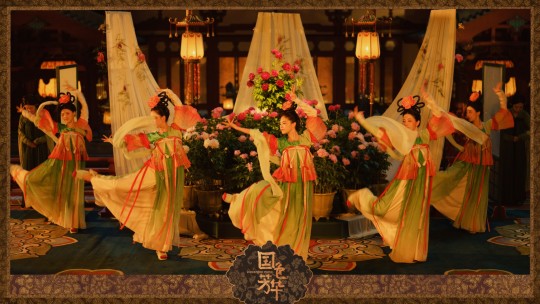
I didn't really enjoy this show but can't deny it had EXQUISITE production and some of best-textured sets and night lighting I've even seen in a Chinese costume drama. And the show's weibo had some lovely meta posts that I just couldn't resist.
As always, disclaimer: My Chinese is elementary but I'll try to provide external links to supplement the posts so you can read from people who know better!
I'll update this post as I go, following through with the new season as well once it's aired. As the post will be continuously modified, keep in mind that if you reblog it you'll only be having the old version. I suggest using some other way to "bookmark" it and reblog once the post is completed.
Tang Dynasty Wedding Customs
Types of Peonies cultivated in Tang Dynasty
Miscellaneous: Food, Props, Styling Peacock Headdress
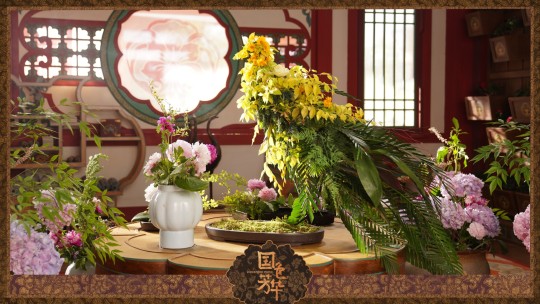
.
More posts by me
40 notes
·
View notes
Text
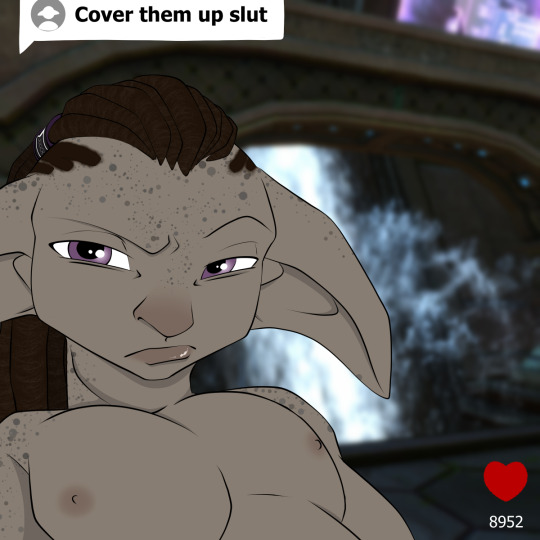
I have been wanting to do this meme with Pyjax pretty much since I made this man.
The Peacemakers' most ripped enforcer, honestly.
27 notes
·
View notes
Text
you know shits bad when i hop on ac1 just to reload jerusalem and have malik shit-talk at me
23 notes
·
View notes
Text
Apparently a lot of people get dialogue punctuation wrong despite having an otherwise solid grasp of grammar, possibly because they’re used to writing essays rather than prose. I don’t wanna be the asshole who complains about writing errors and then doesn’t offer to help, so here are the basics summarized as simply as I could manage on my phone (“dialogue tag” just refers to phrases like “he said,” “she whispered,” “they asked”):
“For most dialogue, use a comma after the sentence and don’t capitalize the next word after the quotation mark,” she said.
“But what if you’re using a question mark rather than a period?” they asked.
“When using a dialogue tag, you never capitalize the word after the quotation mark unless it’s a proper noun!” she snapped.
“When breaking up a single sentence with a dialogue tag,” she said, “use commas.”
“This is a single sentence,” she said. “Now, this is a second stand-alone sentence, so there’s no comma after ‘she said.’”
“There’s no dialogue tag after this sentence, so end it with a period rather than a comma.” She frowned, suddenly concerned that the entire post was as unasked for as it was sanctimonious.
121K notes
·
View notes
Text
104K notes
·
View notes
Text
Okay well. I'm at the lake and there are some kittens here who were very very clearly dumped!!
9K notes
·
View notes
